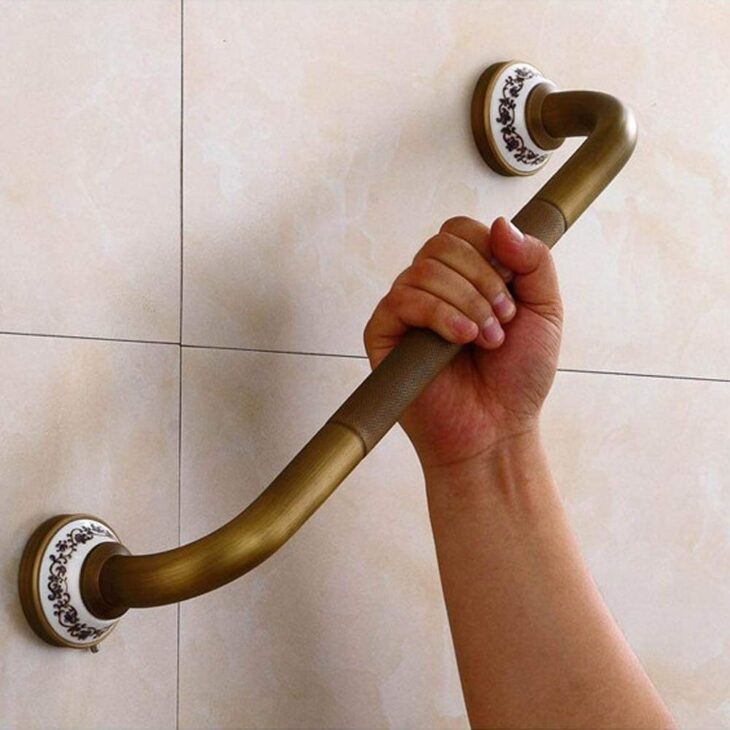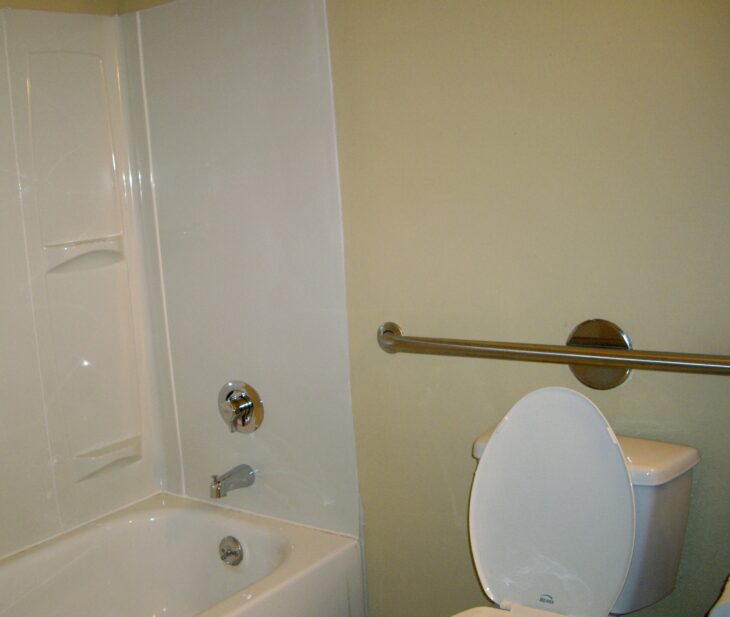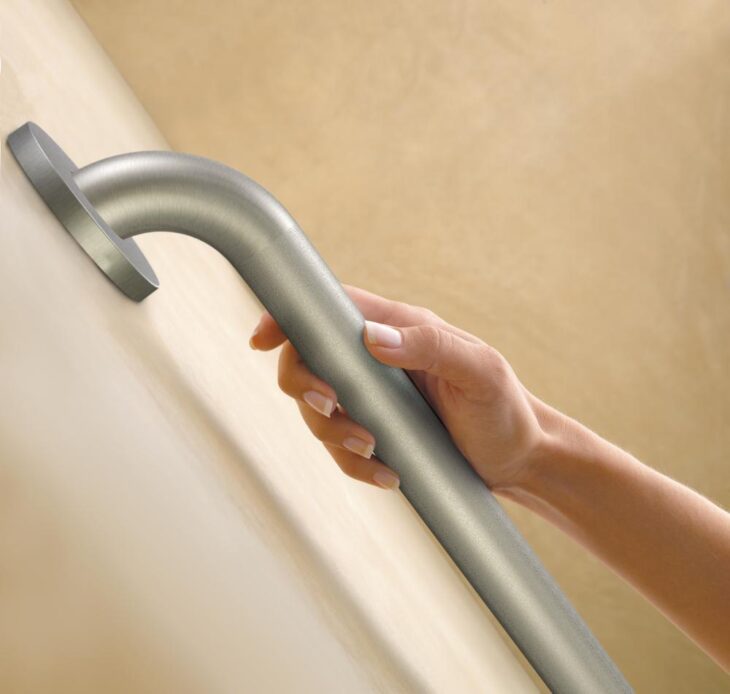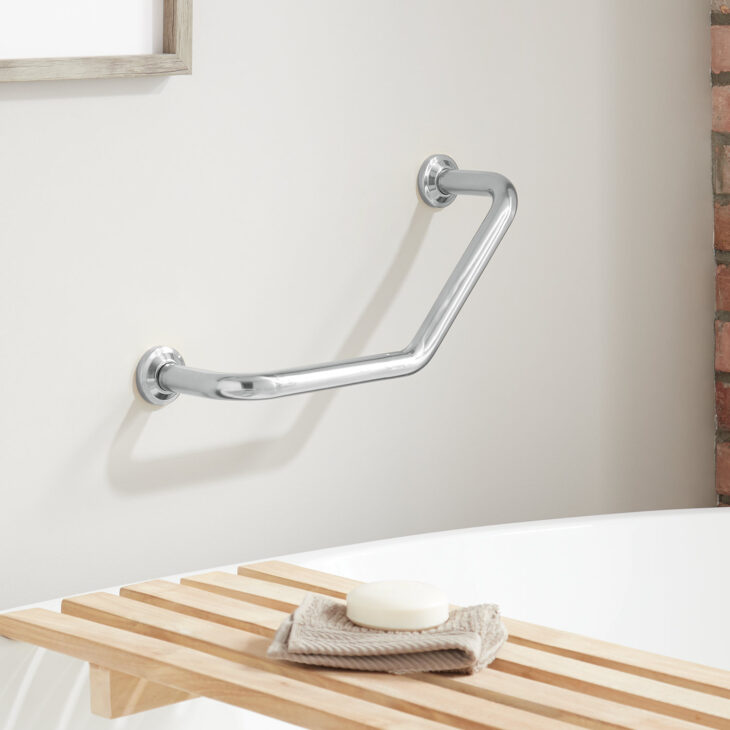Grab bars are one of the most commonly used disability aids in the bathing and the toileting area.
These disability aids are attached to the wall in strategic locations and provide balance and support to users when they are raising or lowering themselves on a toilet seat, entering or exiting a bathtub or standing in a showering area for a long period of time.
Given that there are so many different grab bars available in the market, we decided to put together this blog to educate users about some of the things that they should look out for when they are buying grab bars.
While this blog is not a complete buying guide, it does cover some of the most important aspects that a user should consider when they buy grab bars.
Grab bars come in different shapes, sizes and colours each suitable for a specific need or a purpose and you can find different types of bars at evekare.
Grab bars come in a number of different shapes including straight, angeled, L-shaped, cur for corners. Each of these shapes has been developed for a specific need of the user.
Straight and angled grab bars can be used in the toileting area and the bath area to assist the user in raising and lowering themselves. It should be noted that angeled grab bars are good for users who have a weak wrist and need 2 points of contact in order to distribute their body weight.
Another commonly used grab bar in the toileting area, more often in a commercial setting, is a wraparound grab bar. These grab bars are installed on 2 walls next to the toilet and can assist the user in raising and lowering themselves on a toilet seat.
Then there are grab bars that are curved in a manner that allow them to be fixed in the corner of a bathing or showering area. These corner grab bars often come with shelving fitted to them for providing extra functionality and safety to the user.
In terms of sizes, you will find grab bars ranging in length from 300 mm (12 inches) to 1200 mm (48 Inches). Differing lengths are available in order to suit different areas of installation and also to meet the user’s needs.
Another thing to look for when it comes to the size is the diameter, these range from 25 mm (1 inch) to 38 mm (1.5 inches) with 32 mm (1.25 inches) being the most widely used diameter.
Finally, you will find all different types of colours ranging from silver to black and anything in between. Different colours are available in order to serve visually-impaired individuals.
The idea is to use a colour that contrasts against the colour of the wall surface.
Contents
1. Grab bars need to meet certain regulatory standards

Source: gcbsclubc
Each country has put forward certain standards that need to be adhered by manufacturers of disability aids in order to maintain high standards of safety. In the US these guidelines have been put forward by Americans with Disabilities Act or ADA.
These guidelines govern the thickness, the length, the weight-bearing capacity and the type of grab bar to be used in a particular area, amongst other things.
Also, these guidelines help installers or users to ensure that the grab bars are actually installed properly as well and allow for better safety of the users.
Make sure that the grab bar you invest in needs to at least meet these standards.
2. You should try a grab bar before you buy it

Source: wikipedia
Grab bars are an important purchase because they are used to enhance the safety of a user in areas where the risk of slips and falls is very high and because it is a product that is used in the long run.
Comfort is very important when it comes to grab bars, therefore, it is important that a user tries the product before buying it.
Things to look out for include is the texture of the grab bar, the diameter and the weight-bearing capacity.
Grab bars come in many textures ranging from a smooth finish to knurled finish. Make sure that you don’t find the surface of the grab bar to be very rough.
Similarly, for the diameter, you should ensure that you can get a good grip of the grab bar. After all, you will be putting your whole body weight on it.
4. The weight-bearing capacity of a grab bar is a very important consideration

Source: amazon
Make sure that the grab bar you choose is meant to take on your weight. The last thing you want is the grab bar breaking or bending while in use.
You will need to measure a person’s weight before you start your grab bar shopping and ensure that the grab bar you select is built to take the person’s weight.
This information is generally clearly displayed on the packaging of the grab bar and if you happen to be shopping online then this information should be readily displayed under the product description.
5. Proper installation can go a long way in maintaining the safety of a user

Source: signaturehardware
While it may sound tempting to install the grab bar on your own but, don’t make this mistake!
Especially if you have a wall built with plasterboard in your bathroom, you need to ensure that the screws go in the studs. This will mean that the grab bar can actually take on the weight of the user.
Another thing to keep in mind is that grab bars that are used in wet areas need to be earthed and this is a job only a professional can do.
